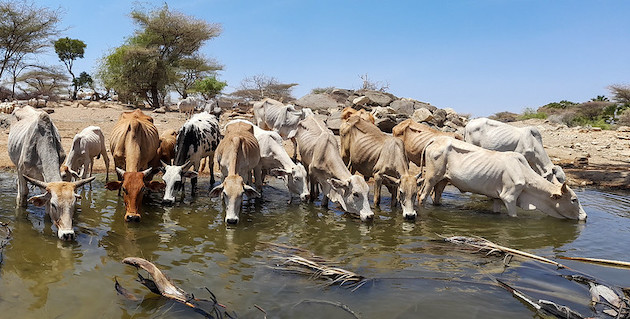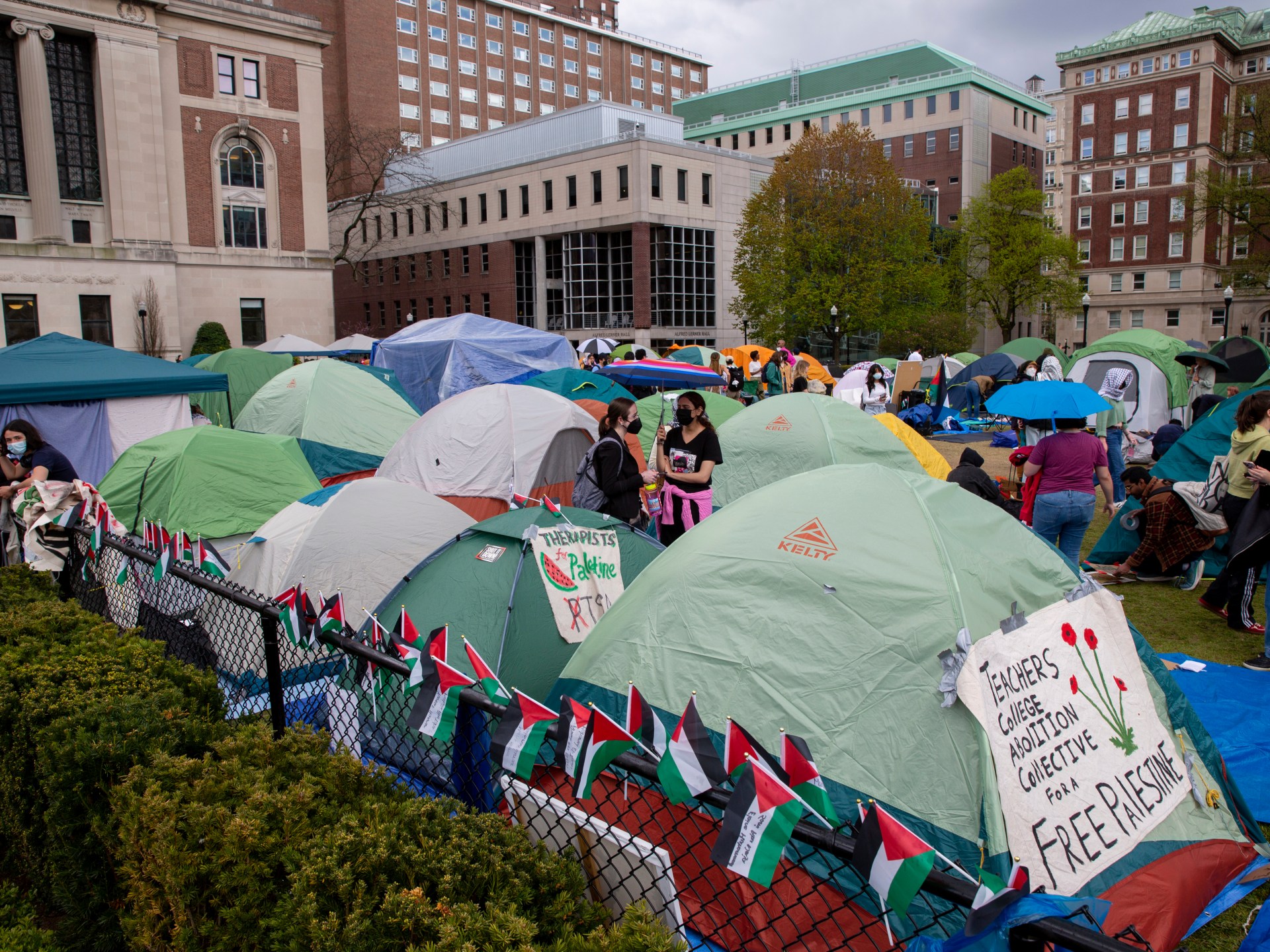Women hold the Key to Success of Pastoralism in Africa — Global Issues
NAIROBI, Oct 17 (IPS) – Women in pastoralist areas of East Africa are critical to the health of livestock in their communities, holding the key to effective animal vaccination campaigns meant to protect herds against deadly diseases.
They are, therefore, an important part of any vaccination strategies designed to guard the animals against killer outbreaks and need to be involved in such efforts for them to be successful.
Achieving the goals of such campaigns has become increasingly important as the effects of climate change introduce new diseases that threaten the sector and, by extension, household incomes.
It has become critically important to integrate females in such health campaigns, and one barrier to their success is the failure of authorities and development agencies to involve them.
While women, due to cultural reasons, do not commonly own livestock, they act as caregivers when the animals are sick, and with incidents of disease outbreaks rising, involving them, in the end, ensures improved food and financial security for families.
Besides, an increasing number of households in the region where livestock keeping is the economic mainstay are being headed by women who also act as providers to their families.
Unsurprisingly, as many as 43 percent of livestock insurance policyholders in northern Kenya and southern Ethiopia, where the policies have been introduced in the recent past, are women, scientists at the International Livestock Research Institute (ILRI) say.
“Besides taking care of animals when they are sick, women influence the allocation of resources at the household level, determining things such as how money should go to buying vaccines, for example. Therefore, a strong gender strategy to allow women access to disease control is very important,” said Dr Bernard Bett, ILRI Senior Scientist, Animal and Human Health Program.
In its disease surveillance and response strategy, ILRI engaged “community disease reporters,” local leaders, and village women’s champions, including women heads of households, to gather information on outbreaks and to create awareness about vaccination campaigns, says Bett.
At times he noted, women got intimidated in queues by men during mass vaccination exercises, making them lose valuable time for other chores at home as they waited for their turn in the queue.
Authorities and organizations carrying out the missions have responded by enforcing a first–come–first–serve policy in the interest of fairness and increased animal health personnel staffing levels for orderly vaccinations, he explained.
Recognizing that conflict with household tasks was a permanent reality for women, ILRI practiced and advocated for early communication to enable better planning through community messaging while actively supporting females’ role in caring for livestock, he added.
Climate change, evidenced by frequent droughts and flood incidents in arid and semi-arid areas of East Africa that are the home of pastoralism in the region, Bett observed, presented a major disease burden with incidents of outbreaks of diseases such as Rift Valley Fever being a major threat.
“Highly climate-sensitive diseases causing pathogens attracted by changes in weather conditions, including those caused by vectors such as ticks and tsetse flies, become common. Efficient delivery of disease control measures, including vaccinations, is therefore important,” he told a recent media briefing in Nairobi.
Owing to the nomadic nature of pastoralists in search of pastures and water in times of shortage it is women are the ones who take care of households when the men are away with cattle and camels, while women are left behind caring for goats, calves, and vulnerable animals, making them also effectively in charge of their households.
Like their counterparts in the crop farming areas of the region, women pastoralists are faced with the challenge of providing food for their families, which is made worse by lack of income due to livestock deaths, noted Dr Rupsha Bernerjee, ILRI senior scientist attached to livestock and climate initiative.
“Whenever there are shocks such as droughts which in turn lead to food shortages, women skip meals to ensure their families are fed. It is therefore important to promote social inclusion in livestock health programs to ensure no one is left behind,” she said.
The impressive uptake of livestock insurance among women increases the resilience of herder communities, enabling them to cope with climate-induced risks, she added.
“Payments made to herders when droughts are very severe help in reducing distress sales of livestock guaranteeing that families are cushioned against possible malnutrition, thus the importance of women livestock health,” she told the briefing at the global body’s Nairobi headquarters.
In appreciating the important role in the health of livestock IDRC, Global Affairs Canada and the Bill & Melinda Gates Foundation established the Livestock Vaccine Innovation Fund (LVIF), which supports the development and production of innovative vaccines to improve livestock health and the livelihoods of farmers.
The agency notes that worldwide, more than 750 million people keep livestock as a source of income, 400 million being women, but animal diseases, such as Newcastle disease in chickens and peste des petits ruminants (PPR) in goats, create widespread devastation, with women disproportionately affected because “they are less likely than men to be able to access vaccines to prevent such losses.”
“Millions of women livestock holders face financial and animal losses when diseases sweep through their farms. These infections are often highly preventable with a simple vaccination, so what is preventing women from taking measures to protect their assets?” the IDRC poses.
To answer find answers to the imbalance, the partners launched a regional livestock vaccine initiative called SheVax+ research project was launched in 2019, bringing together Cumming School of Veterinary Medicine at Tufts University-US, the Africa One Health University Network (AFROHUN) together and implementing partners, Makerere University, University of Nairobi, and University of Rwanda.
Helen Amuguni, the SheVax+ principal investigator, identifies three primary barriers to livestock vaccine uptake among women smallholder livestock farmers in East Africa, including gender norms, which lead to women having less access to information on vaccinations, animal health, and livestock management practices.
Stereotypes, she says, affect the way women are viewed in relation to livestock ownership, leading to their exclusion during vaccination information campaigns. Power relations also mean some women require permission from the male household head to attend training or control livestock-related resources.
As a result, many women lack understanding of, among other things, the availability and importance of vaccines, while those who do have awareness may be prevented from acting upon it, she explains.
Besides carrying out disease control and management initiatives insuring livestock, as happens with the Index-Based Livestock Insurance pioneered by ILRI to ‘de-risk’ the sector, was a critical component of cushioning the sector’s well-being and incomes for households, according to Bernard Kimoro, head of climate change and livestock sustainability in the Ministry of Agriculture and Livestock Development, Kenya.
Operational in northern Kenya and southern Ethiopia, the insurance utilizes satellite data to determine and read the conditions of the vegetation, where herders get compensation when the vegetation turns brown/yellow to indicate drought or shortage of foliage.
Desperation in the pure livestock systems in the region due to frequent climate change-linked droughts in the region called for both new animal disease control and feeds and nutritional strategies, he said.
The droughts have led to keepers using unsustainable feeds with high methane gas levels owing as the owners tried to keep animals alive during the dry spells, the official regrets.
The Greater Horn of Africa region is predicted to experience El Nino weather conditions characterized by higher than usual rainfall beginning this October to early 2024.
IPS UN Bureau Report
Follow @IPSNewsUNBureau
Follow IPS News UN Bureau on Instagram
© Inter Press Service (2023) — All Rights ReservedOriginal source: Inter Press Service
Check out our Latest News and Follow us at Facebook
Original Source







